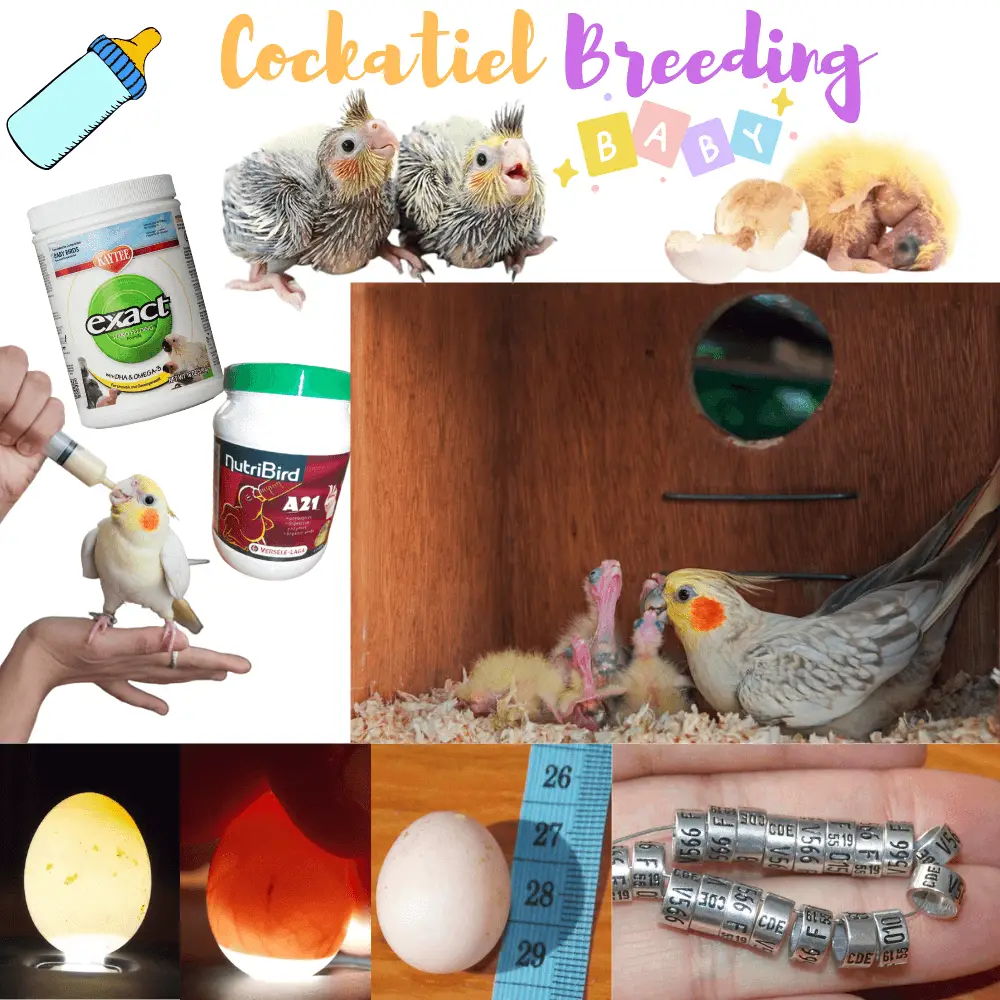
Breeding cockatiel and Cockatiel Reproduction. The Cockatiel can reproduce from the age of one year, but it is advisable to wait a few more months before mating: 15 months for the male and 18 months for the female. This one lays 3 to 7 eggs and the brooding lasts between 16 and 22 days, depending on the ambient temperature.
When everything goes well…
Preparation of the calf upstream
Breeding Cockatiel
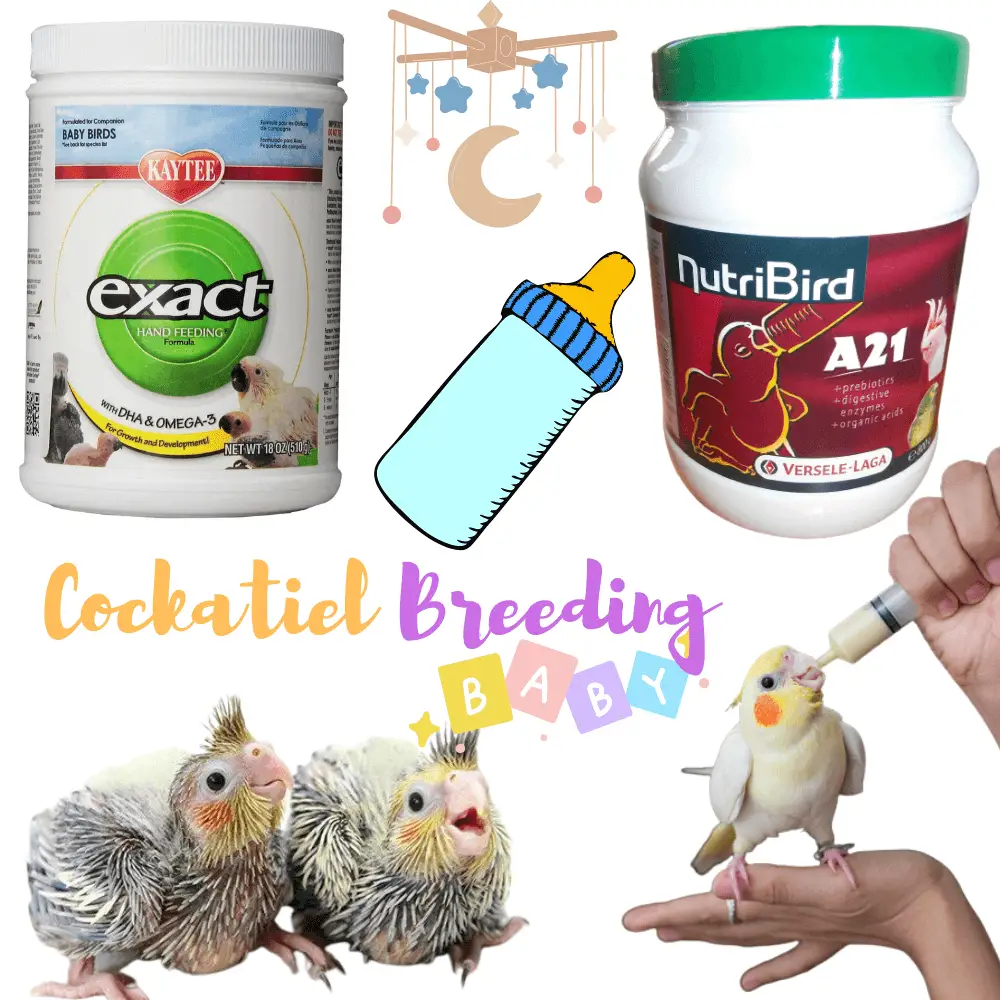
Before you start breeding your skullcaps, it is useful to prepare the ground. On the one hand, it is best to inquire beforehand about the adopters you can have for your pets.
Indeed, what will you do with babies if no one adopts them? Do you have the facilities, space, time, and budget to take care of them? Remember that you will be responsible for their birth, and therefore you need to prepare properly for all eventualities.
Breeding Cockatiel
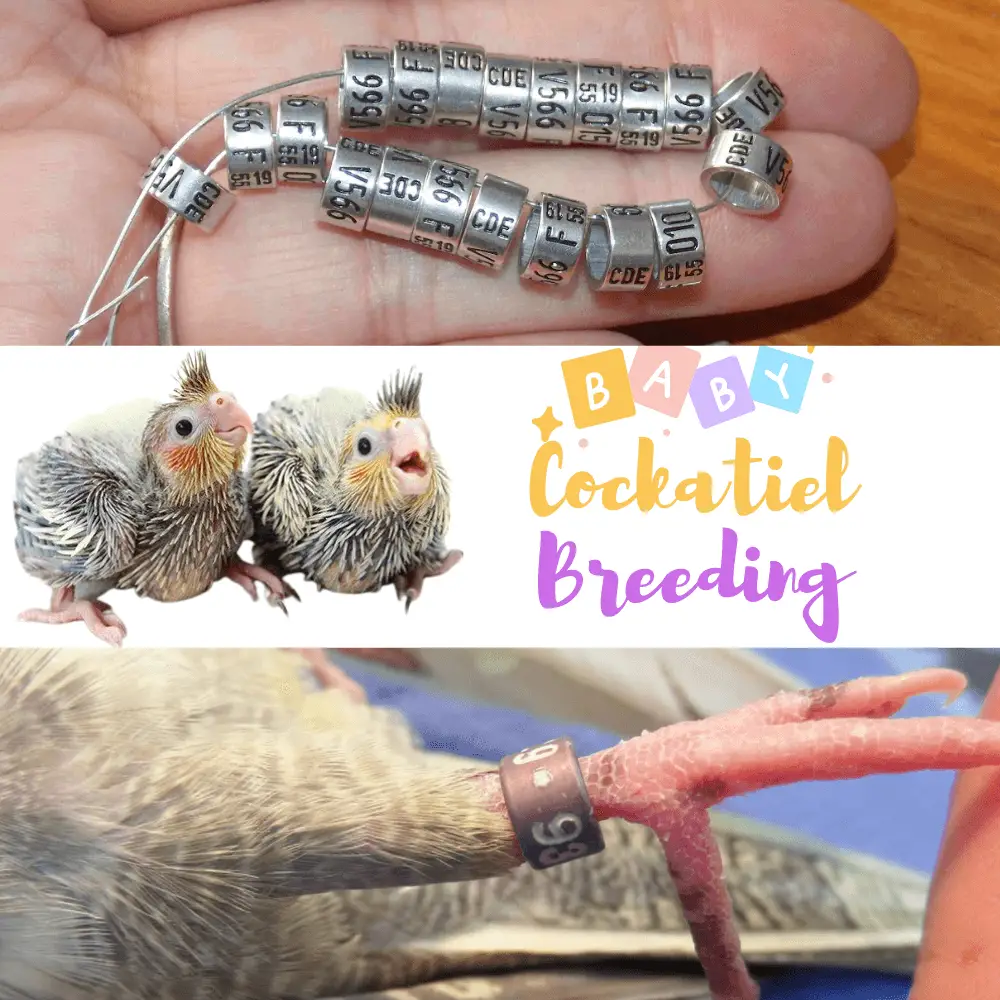
Plan in advance to purchase Nutribird A21 or any other brand of nestling feed for hand feeding. The goal is not to promote hand-feeding breeding, but simply to be able to intervene in case of emergency. If something happened to one of the parents or if they simply did not take care of the babies, then you would be ready to feed them yourself and save them from death. If the chicks will indeed be hand feeding, this is not a hand feeding of convenience but a rescue hand feeding.
Also remember to equip yourself with needleless syringes of 1ml capacity (or quality brushes, which I personally prefer), a thermometer, a hygrometer, and a heating mat (or a heating lamp) with adjustable temperature. In addition, it is better to ring the birds (banding diameter of the cockatiel: 5.5).
This will not only allow you to trace the cockatiels from your reproductions, but also allow the adopters to present the birds in competition if it is their wish, and especially to prove your status as a calf and recover the animal if it were to be lost or abandoned… To do this, you must order rings from one of the approved associations.
Remember that your rings, once ordered, will take about 2 months to be delivered to you (except for priority orders) and will have to be changed every year. Be foresighted! With the rings, do not forget to bring a notebook to note the name and contact details of each adopter as well as the ring number of the animal he will adopt. You will know who adopted which cockatiel. Selection of breeding cockatiels
In the first place, the selection of a breeding pair must be carried out according to the age parameter. Indeed, even if sexual maturity is reached from the age of 9 months, to reproduce a female must be at least 18 months old while a male must be 15 months old.
For the sake of your pets, it is good to only do a maximum of 2 broods per year with a break of several months in between.
It can happen that -during the period of love and the hormonal rush- the cockatiels have the colors that “drool”: the orange of the face disperses on the face of the animal.
Note that a stimulating environment will allow better reproductive performance.
Read our articles:
Preparation of the pair of breeding cockatiels is necessary prepare the pair a month before the laying of nests. To do this, their diet must be enriched: pie with farmed eggs, sprouted seeds, cuttlefish bones, and an additional intake of vitamins.
Once this is done and provided that none of the birds are in the molting phase, it is possible to lay the nests. These should propose the following approximate dimensions:
- Width: 36 cm
- Depth: 21.5 cm
- Height: 35 cm
- Flight hole: 16.5 cm in diameter
Laying of the cockatiel
The cockatiel lays between 4 and 6 eggs on average, the first egg comes into the world approximately a week after the couple has ticked off. Then the female lays an egg every 48 hours on average. Do not forget to number the eggs as you go with a marker to recognize them, this will help you later. It happens that the female cockatiel begins to incubate only when all the eggs are laid, or even from the arrival of the third or fourth egg only.
Breeding Cockatiel

Video: campsite ticked by her male
Clutching of cockatiel and mirage of eggs
The couple takes care of the brooding of the eggs together, usually the male during the day and the female at night. Do not disturb them unnecessarily and take advantage of the absence of the parents in the nest to check that everything is fine, look at the eggs, or number them. In the last days before hatching, it is sometimes possible to see the egg move or even hear the baby “singing” in its egg.
More eggs are a technique to help determine if the eggs are fertilized or not. Remember that a female does not need the presence of a male to lay eggs! However, in the absence of a male, the laid eggs will always be infertile: they are said to be “clear”.
You can wait between 7 and 10 days after laying eggs before shooting. To do this, wait until the parents are out of the nest and use, for example, the flashlight on your mobile phone. The presence of a dark spot and blood vessels is a sign of the presence of a fetus in the egg. You can remove the clear eggs from the nest so as not to tire the female unnecessarily.
Video: Nestlings that chirp inside the egg
Breeding Cockatiel
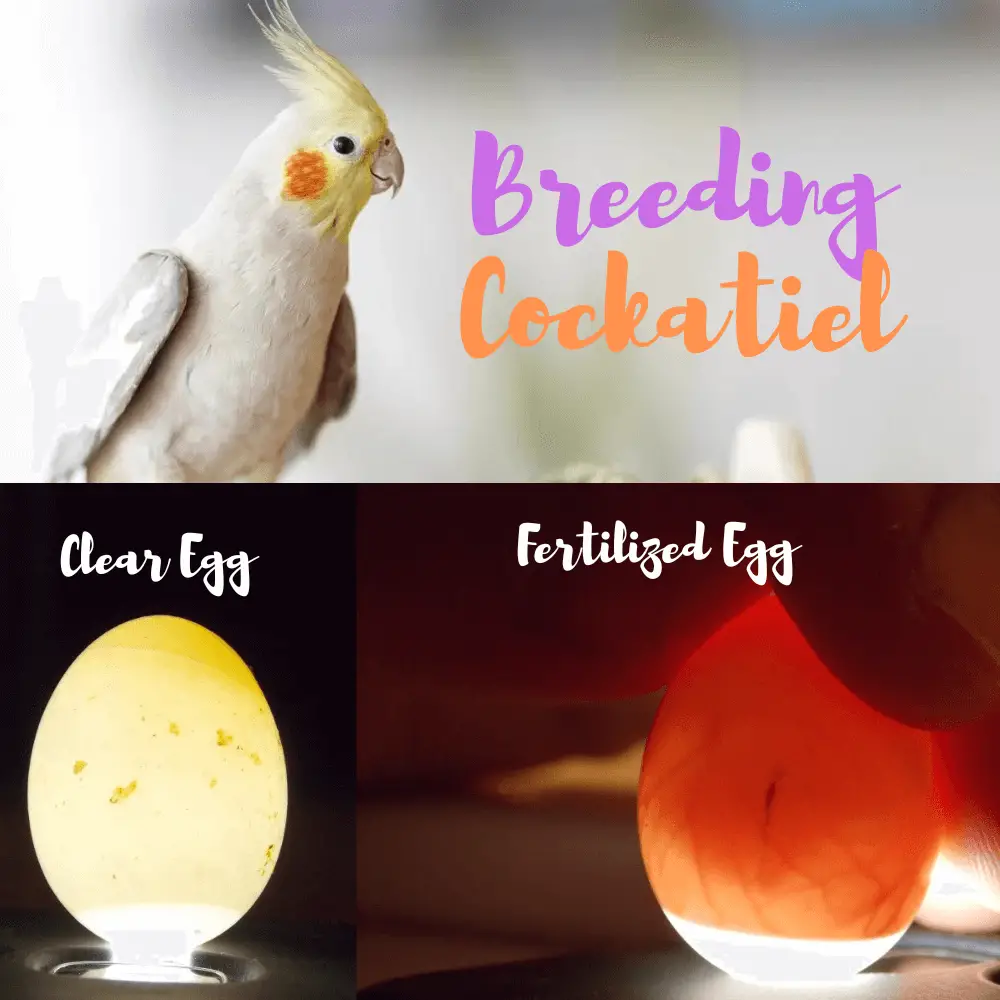
Hatching of cockatiel eggs
Hatching occurs after an average of 21 days. It is important not to disturb parents too much. Check daily that the chicks’ crop is full (see photo at the bottom of this page) but do not handle the babies in front of the parents, at the risk of stressing them unnecessarily.
It is during the last third of brooding that the risk of mortality is highest. This is the period of rapid further development of the body and preparation for hatching during which 50% of total embryonic mortality can occur. This process includes the complete absorption of the yolk, the sealing of the umbilical cord, the beginning of lung function and finally the reorientation of the embryo in the hatching position (head under the right wing and erect beak towards the air cell).
Evolution and weaning of cockatiels
Calopsitte chicks are born blind and covered with a yellow down (except for white Face mutation cockatiels which are born with a white down). They are fed by the parents who regurgitate the contents of their crop through retrograde peristaltic contractions.
The eyes open at the age of about ten days while the feathers begin to appear around 15 to 20 days. If you want to handle babies in the nest (MAN), you can start after opening your eyes. To do this, you will need to start by properly disinfecting your hands and keeping them warm. The manipulations must be carried out in compliance with the cycle of the chick: out of its feeding and sleeping times, and in a place sheltered from drafts. Of course, manipulations can only be carried out when the parents are outside the nest.
Handle the chick for one minute the first time, then increase the handling time by an additional minute each day.
Weaning takes place after about 8 weeks, or 2 to 3 weeks after a flight out of the nest when the young no longer ask the parents to eat. To allow the bird to leave the nest, however, it will be necessary to lay wire mesh to the flight hole inside the nest to allow it to climb to the exit.

Video: Feeding a nestling by an adult
Breeding retreat
From a certain age, the cockatiels become too old to reproduce. The retirement age is considered to be approximately 8 years. However, it is indeed up to the breeder to determine this age through his knowledge of the couple, his state of health, and the number of broods already carried out …
And when it goes wrong?
Chronic egg-laying
Chronic egg-laying is a frequently encountered problem. Despite the received idea, the female cockatiel does not need the presence of a male to suffer from this effect. Laying draws a lot of energy from the female, so it makes sense that chronic laying (that is, excessive egg production) quickly turns out to be dangerous for the state of health of the cockatiel.
Promoting healthy behavior on the part of the bird and favoring a quality diet are two essential points to avoid chronic egg-laying. Thus, it is necessary to avoid giving too fatty food and it is necessary to maintain a healthy relationship with his birds: the master should not offer his bird treats held between his lips, it is better to avoid petting the animal on the back or in the pelvic area and it is of course necessary to offer an enriching environment to the cockatiels.
Obviously, a cockatiel must never be alone and must always have at least one congener at her side (regardless of gender). Thus, it will be possible to foster a relationship based on play rather than on a pseudo “couple” relationship between the cockatiel and her master.
If the female cockatiel has a chronic egg-laying problem, a few changes in her environment can help stem the problem. Of course, cockatiels should not have access to a nest.
First of all, you must first lower the brightness and offer only 8 to 10 hours of light per day. The cockatiel will attribute this decline of sunshine to the arrival of winter and reduce its egg-laying. At the same time, limit baths and remove toys that promote sexual behavior on the part of the animal. You can take the opportunity to offer your cockatiels new unknown toys: novelty and stimulation by enriching the environment can reduce chronic egg-laying.
Finally, do not remove the eggs and let the animal hatch until it abandons its eggs on its own.
If despite all this the female is still in a chronic laying cycle, medical treatment is possible through the placement of an implant.
The egg retained or laid pain
The “retained egg” is thus called the inability of the female cockatiel to expel her egg. The egg fails to pass into the oviduct in a “normal” period of time, approximately 24 hours. It is also called “laying pain” or “egg retention”. This pathology requires the rapid intervention of a competent veterinarian. The origin of a laying ache can be varied: chronic egg-laying, female too young or too old, obesity, dysfunction of the oviductal muscle, or even deficiencies due to poor diet (hypocalcemia, vitamin E or selenium deficiency).
A lack of physical exercise can also be the cause of egg retention: indeed, inadequate activity reduces the muscle strength of the animal. Also note causes such as damage to the oviduct, the presence of a bacterial infection in the uterus or oviduct, neoplasia, or even an egg with malformation. Indeed, during its development, the egg goes through a calcification phase allowing its hardening. Females lacking calcium or vitamin D can generate a “soft egg”, that is, an egg that has not properly completed its hardening: the egg will have more difficulty being expelled. Certain genetic predispositions to egg-laying sickness are sometimes evoked.
Symptoms of laying pain are first of all shortness of breath, dyspnea or tachypnea, weakening, and then lethargy in the female. She may stand her legs apart or experience unilateral or bilateral paresis of the legs and have contractions. We can visibly see the roundness caused by the egg at the level of the cloaca of the cockatiel.
Laying pain can lead to prolapse, a descent of organs due to the egg stuck in the membrane of the cloaca.
Breeding cockatiel
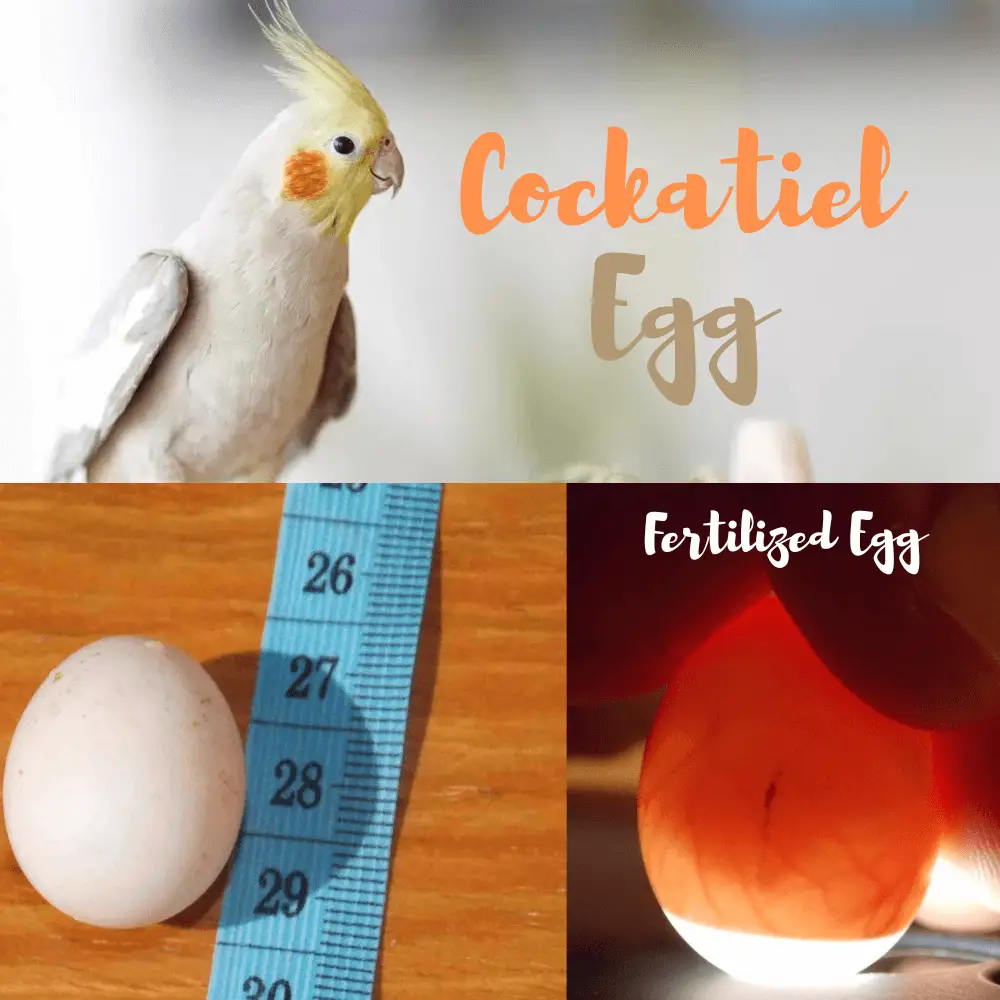
Abandonment of nestlings by parents
Cockatiels do not have extraordinary parental qualities, far from it. Most of the first broods of a couple turn out to be more or less catastrophic. It therefore sometimes happens that it is necessary for the calf to replace the parents and raise the chicks himself. This is called rescue hand feeding. Of course, the older the chicks, the higher the chances of success.
Place the chicks in a plastic box on a heating mat (or heat lamp) at a temperature of around 36° (the temperature should drop as the cockatiels grow to about 26° when they are completely covered with feathers). The hygrometry, on the other hand, should be 55-60%. To do this, place a small plug of water in the box, but make sure that babies cannot reach it. Having previously equipped yourself with a 2-in-1 thermometer/hygrometer with a probe (to have the exact measurements as close as possible to the chicks) is particularly useful.
Breeding cockatiel

For the first two weeks, babies will need to be fed every 3 hours, night and day. Then, at 3 weeks it is possible to feed every 4 hours until midnight. Then every 5 hours to the 4th week. At the age of 5 weeks, feeding is done every 6 hours during the day only. Between 6 and 7 weeks, count one feeding in the morning and one in the evening, and for the 8th week, feeding in the evening is enough. Make sure the crop is always empty before starting a new feeding session. Feed until the crop slightly protrudes from the shoulders of the chick.

Cockatiel Breeding
As babies grow, the food will have to take on the consistency of soup, then pancake batter, and finally cake dough: to do this gradually increase the volume of Nutribird A21 in the water. The ideal ratio would appear to be a diet of 7% solids in the first 4 days after hatching, followed by 30% solids for up to 28 days. The amount of water required by nestlings decreases during the first 4 days after hatching: thereafter, diets containing 90% or more water are harmful to them.
The temperature should be that of a pleasantly hot soup (test it with the thermometer or by putting a few drops in the hollow of your arm, it should be warm but not burn you). Keep the mixture in a water bath so that it does not cool down: cold food could be fatal to your chicks.
As for the eggs placed in incubators, they will have to enjoy a temperature of 37.5 ° and relative humidity of approximately 56%. They will have to be turned at 90° every two hours.
How to breed cockatiel
SOURCE:Marj Chavez Vlogs
Related Articles:
- yellow cockatiel
- Pearl cockatiel
- Cockatiel white face
- yellow cockatiel
- Care of cockatiel
- How long does cockatiel live
- Cockatoo vs Cockatiel
- cockatiel colours




















